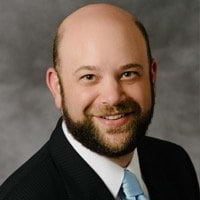How Many Years Between Bankruptcy Filings?
Bankruptcy has a negative connotation or stigma and although it is a great tool to eliminate or consolidate debt, many people find it is too stressful or intimidating to file more than once. Unfortunately, sometimes, it is necessary to file bankruptcy more than once in the debtor’s lifetime.
When or if it becomes necessary to file bankruptcy for a second time, there must be analysis of the impact of the former case.
-
When the debtor wants to file a Chapter 7 after successfully completing through discharge a former Chapter 7 liquidation, the debtor must wait 8 years pursuant to section 727(a)(8);
-
When the debtor wants to file a Chapter 7 after successfully completing through discharge a former Chapter 13 reorganization, the debtor must wait 6 years pursuant to section 727(a)(9);
-
When the debtor wants to file a Chapter 13 after successfully completing through discharge a former Chapter 7 liquidation, the debtor must wait 4 years pursuant to section 1328(f)(1);
-
When the debtor wants to file a Chapter 13 after successfully completing through discharge a former Chapter 13 reorganization, the debtor must wait 2 years pursuant to section 1328(f)(2).
The relevant date for calculation of the “waiting period” is the date of filing and not the date of discharge. Therefore, if a Chapter 7 case is filed Jan. 1, 2012, and discharged, and years later the debtor needs to file a new Chapter 13 case, the debtor must wait four years from the filing of the first case – after January 1, 2016.
What happens if the case is dismissed (unsuccessful) versus discharged? The Bankruptcy Abuse Prevention and Consumer Protection Act of 2005 (BAPCPA) has prohibitions to prevent “serial filers” – those people who file shortly after a previous case is dismissed, usually to prevent or frustrate a foreclosure sale.
Under the BAPCPA amendments, when a new case is filed within one year of the dismissal of a previous case, the debtor must move, and in Tampa Bankruptcy Court have a hearing on, a motion to extend the automatic bankruptcy stay as to all creditors. Basically, the debtor must prove why case #2 will be successfully completed where case #1 failed. If a new case is filed within one year of the dismissal of two previous cases, there is no automatic stay and the creditors are free to pursue the debtor for money owed – subject to whether the assets of the debtor are owned by the bankruptcy estate and trustee, or whether the assets are exempt.
It is important to review the previous bankruptcy case before filing the later case for these reasons, but also because, in some instances if the previous case is dismissed and the judge believes the circumstances support that the debtor is a “serial filer,” then the judge could impose a bar or prohibition (in some cases up to 2 years) from re-filing any bankruptcy case.
For more information on Bankruptcy, please subscribe to the Yesner Law Podcast, on iTunes and Stitcher. Or, if you prefer, please contact us to schedule a free initial consultation to discuss your options at 727-261-0224 or email me directly at shawn@yesnerlaw.com.
Shawn M. Yesner, Esq., is the founder of Yesner Law, P.L., a Tampa-based boutique real estate and consumer law firm that helps clients eliminate debt by providing options, so they can live the lifestyle of their dreams. We assist clients with asset protection, the sale and purchase of real property, Chapter 7 liquidation, Chapter 13 reorganization, bankruptcy, foreclosure defense, debt settlement, landlord/tenant issues, short sales, and loan modifications in Tampa, Westchase, Odessa, Oldsmar, Palm Harbor, Clearwater, Pinellas Park, Largo, St. Petersburg, and throughout the greater Tampa Bay area.




